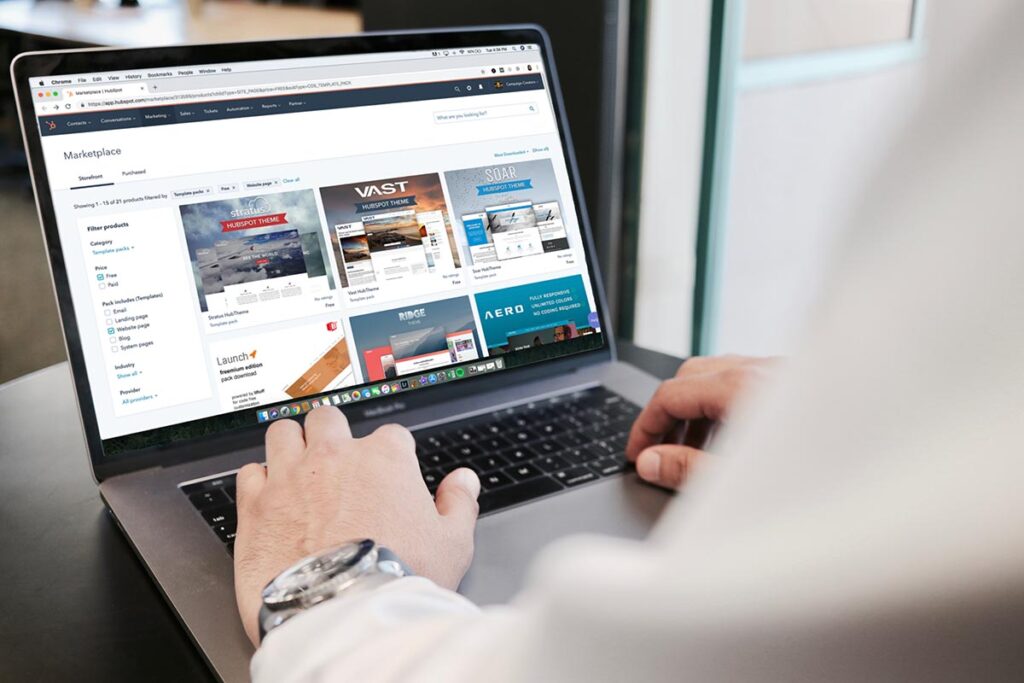
The Design of Your Web Page Must Adjust to Your Business Type.
Designing a website is not only about creating a visually appealing layout. It is also about creating a design aligned with your business goals and objectives. The design of your web page must adjust to your business type to ensure that your website effectively communicates your brand message, values, and purpose. This article will discuss how to design your web page based on your business type.
Table of Contents
- Introduction
- Understanding Your Business Type
- Choosing the Right Design Elements
- Colors and Fonts
- Images and Graphics
- Layout and Navigation
- Optimizing Your Web Page for Mobile Devices
- User Experience and Navigation
- Easy Navigation
- Clear Call to Action (CTA)
- User-Friendly Interface
- Importance of Consistency and Simplicity
- Measuring the Effectiveness of Your Web Design
- Conclusion
- FAQs
Introduction
Your website is a crucial part of your business. It is often the first point of contact between you and your potential customers. A professional and user-friendly website is essential to make an excellent first impression. A well-designed website can drive potential customers away and positively impact your business’s success.
Understanding Your Business Type
The first step in designing your web page is understanding your business type. Your business type can influence your design elements, such as colors, fonts, and layout. For example, if you have a law firm, you may want to use traditional colors like navy blue, black, and gray to communicate professionalism and authority.
On the other hand, if you have a fashion store, use bold and vibrant colors like red, pink, or yellow to showcase your products and attract customers’ attention. Understanding your business type is crucial in creating a design that resonates with your target audience.
Choosing the Right Design Elements
Once you understand your business type, you can choose your website’s design elements. Here are some design elements to consider:
Colors and Fonts
Colors and fonts can influence how your website visitors perceive your brand. Choosing the right colors and fonts can help you effectively communicate your brand message and values. For example, a serif font can convey a more traditional and professional feel, while a sans-serif font can communicate modernity and simplicity.
Images and Graphics
Images and graphics are powerful tools to communicate your brand message and showcase your products or services. Choosing high-quality images and graphics aligned with your brand image can help you create a lasting impression on your website visitors.

Layout and Navigation
The layout and navigation of your website can impact how users interact with your website. A clear and intuitive design can help users find the information they need quickly, while a cluttered layout can confuse and frustrate users. A well-designed navigation menu can help users quickly access the different sections of your website.
Optimizing Your Web Page for Mobile Devices
With the rise of mobile devices, it is essential to design your website to be mobile-friendly. Mobile-friendly websites can improve your website’s user experience, increase your website’s visibility on search engines, and ultimately increase your website’s traffic and conversions. Responsive web design is a design approach that ensures your website adjusts to different screen sizes and devices.
User Experience and Navigation
Your website’s user experience and navigation can make or break your website’s success. A good user experience can help you retain website visitors and increase conversions. Here are some tips for improving user experience and navigation:
Easy Navigation
A straightforward and intuitive navigation menu can help users quickly find the information they need. Using descriptive labels and organizing the menu items logically can improve the user experience.
Clear Call to Action (CTA)
A clear call to action can guide users toward taking the desired action on your website. Whether signing up for a newsletter or purchasing, a clear and prominent CTA can help increase conversions.
User-Friendly Interface
A user-friendly interface can improve the user experience by making it easy for users to interact with your website. For example, having a search bar can help users quickly find what they’re looking for.
Importance of Consistency and Simplicity
Consistency and simplicity are essential in web design. Consistent design elements such as colors, fonts, and layouts can help create a cohesive brand image. Simplicity can make your website more accessible and efficient, improving the user experience.
Measuring the Effectiveness of Your Web Design
Measuring the effectiveness of your web design can help you identify areas for improvement and make data-driven decisions. You can use web analytics tools to track metrics such as website traffic, bounce, and conversion rates. A/B testing can also help you compare design elements and see which ones perform better.
Conclusion
Designing a website that aligns with your business type can help you create a strong brand image and improve the user experience. By choosing the correct design elements, optimizing your website for mobile devices, and focusing on user experience and navigation, you can create a website that effectively communicates your brand message and achieves your business goals.
FAQs
- Why is it important to design your web page based on your business type? Developing your web page based on your business type can help you create a cohesive brand image and communicate your message effectively.
- What design elements should I consider when designing my website? You should consider design elements such as colors, fonts, images, graphics, layout, and navigation.
- How can I optimize my website for mobile devices? You can use responsive web design to adjust your website to different screen sizes and devices.
- How can I improve the user experience and navigation of my website? You can improve your website’s user experience and navigation by using a straightforward and intuitive navigation menu, a clear call to action, and a user-friendly interface.
- How can I measure the effectiveness of my web design? You can use web analytics tools and A/B testing to measure the effectiveness of your web design.
